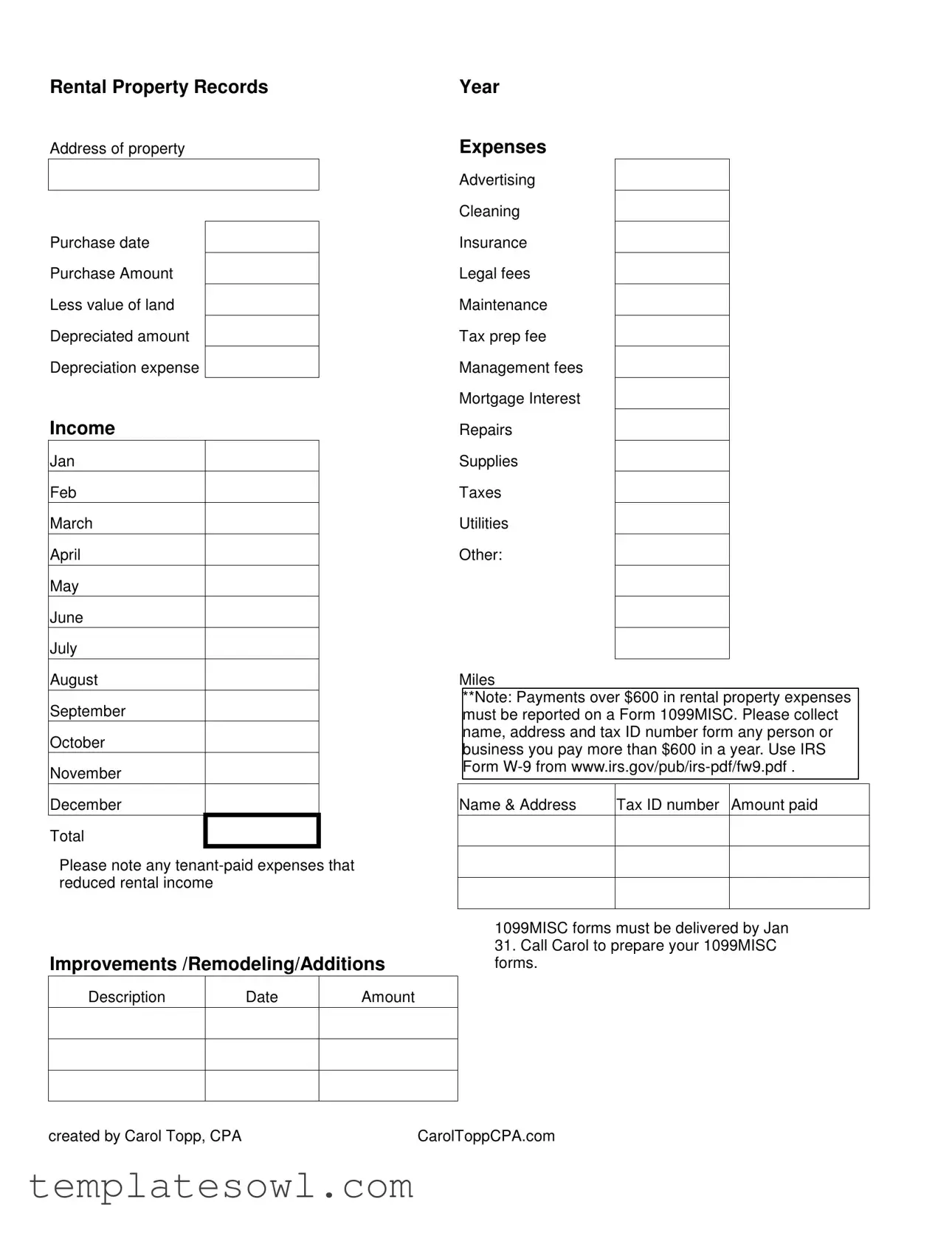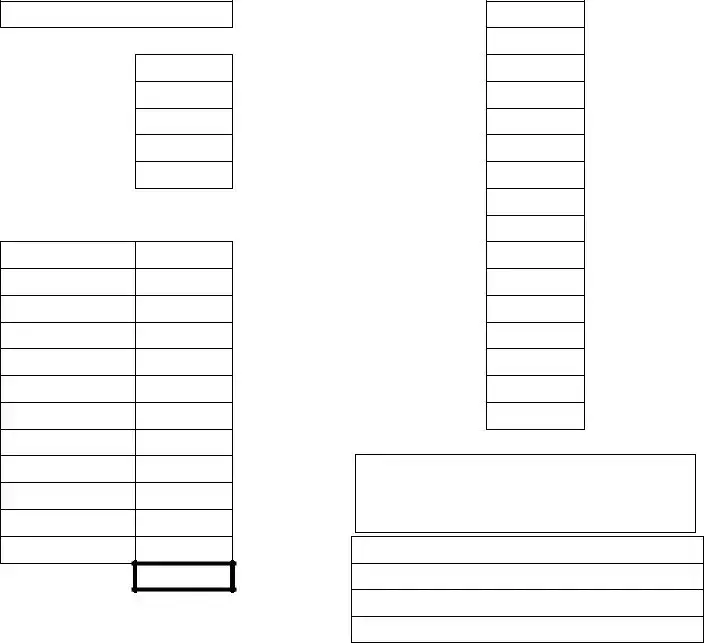What is the purpose of the Rental Property Expenses form?
This form helps landlords and property owners keep track of their rental property expenses. It outlines various costs related to the property, including advertising, maintenance, and repairs. By documenting these expenses, property owners can accurately report income and file their taxes efficiently.
What information do I need to provide about my rental property?
You will need to include the address of the property, the purchase date, and the purchase amount. Additionally, you should note the value of the land separately, since that value is not depreciated. Providing this information allows for a clear understanding of your property’s financial situation.
How do I calculate depreciation for my rental property?
To calculate depreciation, subtract the land value from the purchase amount, then apply the applicable depreciation method over the useful life of the property. This amount is often listed annually and can be documented on the form under “Depreciated amount.” It is important to consult IRS guidelines for specifics on calculations based on your unique situation.
What types of expenses can I deduct using this form?
You can deduct various expenses such as advertising costs, cleaning fees, insurance, legal fees, maintenance costs, tax preparation fees, management fees, mortgage interest, repairs, supplies, property taxes, and utility expenses. If there are other expenses, you can document them in the "Other" section.
What should I include in the 'tenant-paid expenses' section?
If tenants pay certain expenses that reduce your rental income, note these in this section. Examples include utility costs paid directly by tenants or any fees that are payable on their behalf. Including this information provides a clearer picture of your rental income.
What is the significance of the $600 threshold for reporting on Form 1099MISC?
The $600 threshold indicates that any individual or business you pay more than $600 in rental property expenses in a year must be reported to the IRS using Form 1099MISC. This requirement ensures compliance with tax rules and helps maintain accurate records of payments.
What information do I need from someone I pay over $600?
For any person or business receiving payment over the $600 threshold, you must collect their name, address, and tax ID number. This information is essential for accurate reporting on Form 1099MISC and can be obtained using IRS Form W-9.
When do I need to submit the 1099MISC forms?
All 1099MISC forms must be delivered by January 31 of the following tax year. Timely submission helps you stay compliant with tax regulations and avoids potential delays in payment processing or penalties.
Who can assist me with preparing 1099MISC forms?
You can reach out to Carol, as indicated in the form, for assistance with preparing your 1099MISC forms. Her expertise can help ensure that your filings are completed accurately and on time.

